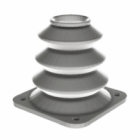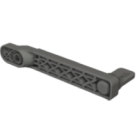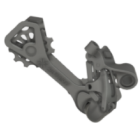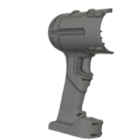3D print slicer programs
In 3D printing, even the most precisely modeled part is useless until it’s translated into instructions the printer can understand. That translation happens through a slicer — a specialized program that converts a 3D model into G-code, layer by layer. These 3D print slicer programs are critical to the entire additive workflow, as they control how an object is built, how material is deposited, and how quality is managed.
Whether you’re printing with FDM, resin, or powder-based systems, using the right slicing software for 3D printers can make or break your final result.
What does slicing software do?
A slicing software for 3D printing takes a digital 3D model (usually in STL, OBJ, or 3MF format) and cuts it into thousands of horizontal layers. It then generates G-code — a set of printer-specific instructions that dictate head movement, temperature, layer height, infill, support structures, and other parameters.
Slicing is where digital design meets physical execution. A good slicer doesn’t just break the model into layers; it also optimizes print time, material use, and surface quality.
Best slicing software for 3D printing
When choosing the best slicing software for 3D printing, consider print technology, printer brand, ease of use, and available tuning options. Here are the most widely used and reliable slicers on the market today:
- Ultimaker Cura – open-source, highly customizable, and compatible with most FDM printers. Great for beginners and advanced users alike.
- PrusaSlicer – tailored for Prusa machines but widely respected for its robust feature set and adaptive layer height control.
- Bambu Studio – developed for high-speed, multi-material printers like Bambu Lab; modern UI with smart profiles.
- SuperSlicer – a community-driven fork of PrusaSlicer with extra tuning options; ideal for power users.
- Lychee Slicer – one of the best options for resin printing, especially for MSLA printers,
- ChiTuBox – another leading slicer for resin-based printers, commonly used in hobbyist workflows.
- PreForm – closed, professional-grade software developed by Formlabs for SLA printing; offers plug-and-play slicing with material presets.
When people ask, “What is the best slicing software for 3D printing?”, the real answer is: the one that matches your printer, materials, and workflow needs best.
Choosing the right 3D slicing software
Not all slicers are created equal. Some are open-source and community-supported, giving you deep control and customization. Others are proprietary and optimized for a specific printer or material system, offering a plug-and-play experience with fewer variables to manage.
If you’re just getting started, Cura or PrusaSlicer are ideal — both offer smart defaults and wide compatibility. For professional resin printing, Lychee or PreForm are commonly used in dental and prototyping environments.
Ultimately, your choice of 3D slicing software impacts everything from part strength and surface finish to how much filament or resin you waste. Learning how to tune your slicer and understanding its features is one of the most powerful skills any 3D printing professional can master.
Explore also
- What software do 3D printers use
- CAD software for 3D printing
- 3D printing simulation software
- 3D optimization software
- Open source vs proprietary software
Related categories













